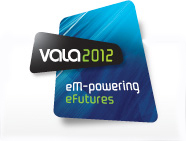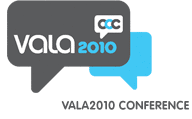VALA2012 Session 15 WellsStreamed video in an academic library: expectations, challenges and responseVALA2012 CONCURRENT SESSION 15: On Demand David Wells and Diana BlackwoodCurtin University Library, WA Please tag your comments, tweets, and blog posts about this session: #VALA2012 and #S15DW |  |
This paper is currently available to VALA2012 registered delegates. Use the VALA2012 delegate login to access this paper.
| View the presentation on the VALA2012 GigTV channel Thursday, February 09, 2012, 1:45 PM AUSEDT, 27 Minutes. |
Abstract
Streamed video is the latest type of content to gain the attention of educators and librarians. This paper examines the take up of this new resource type at Curtin University Library with particular attention to the use of individual streamed titles on the Kanopy platform. It includes reflections on the academic areas which are so far most engaged with streamed video materials, on the particular complexities they present for acquisitions departments, and on usage statistics for the first year of effective operation.

This work is licensed under a Creative Commons Attribution-NonCommercial License.

 Ebook usage at Curtin University Library: patterns, projections and strategy
Ebook usage at Curtin University Library: patterns, projections and strategy